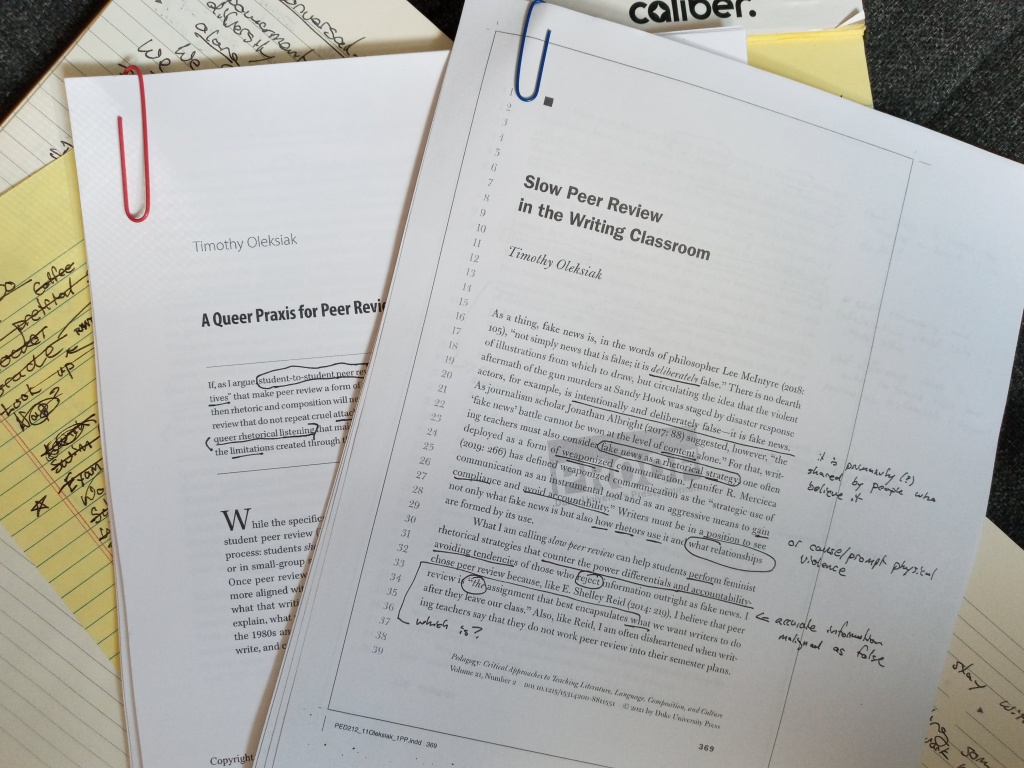
I spoke with Dr. Timothy Oleksiak, Assistant Professor of English at the University of Massachusetts—Boston, about two of his essays, “A Queer Praxis for Peer Review” and “Slow Peer Review in the Writing Classroom,” recently out in College Composition and Communication and Pedagogy. In these essays, they present theory and practice for a pedagogical practice they call slow peer review, a different way to approach that classical strategy of writing classes, student-to-student peer review, where students swap drafts and give each other feedback on how to improve them. Slow peer review does have students swap drafts but asks them to spend a lot more time with the drafts than usual, reading them very carefully and thinking about them deeply. Slow peer review then asks students to respond in different and more in depth ways than just giving the writer suggestions. I found the essays really compelling, opening up so many questions with relevance far beyond this specific practice and far beyond even just the teaching of writing.
In our conversation, which you can watch below, we discuss opera, “the improvement imperative” (i.e., there are more things to do in a writing classroom than help students write better, even as that remains a key goal), and the concept of “cruel optimism” (which refers, in this case, to an unhealthy attachment to certain teaching strategies that aren’t working and won’t suddenly start working through being tweaked). We also discuss the ways in which writers and readers of drafts both participate in “worldmaking.” The idea here is that each draft someone writes envisions a world in which some are included while others are not, and peer reviewers can help writers imagine more clearly what sort of world they’ve built. We also discuss what all of this has to do with queer theory. Lastly, I asked Timothy whether this peer review pedagogy isn’t actually a reading pedagogy. While he’s not so sure, he does have students “read the drafts five different times” and directs students to consider such questions as “What does it mean to be fully human in this world?” (i.e., in the world of the draft being read). Those seem like scaffolds for deep reading to me. At any rate, whatever else this pedagogy does, it does ask students to really read each other’s writing. And that feels extraordinarily valuable to me.
